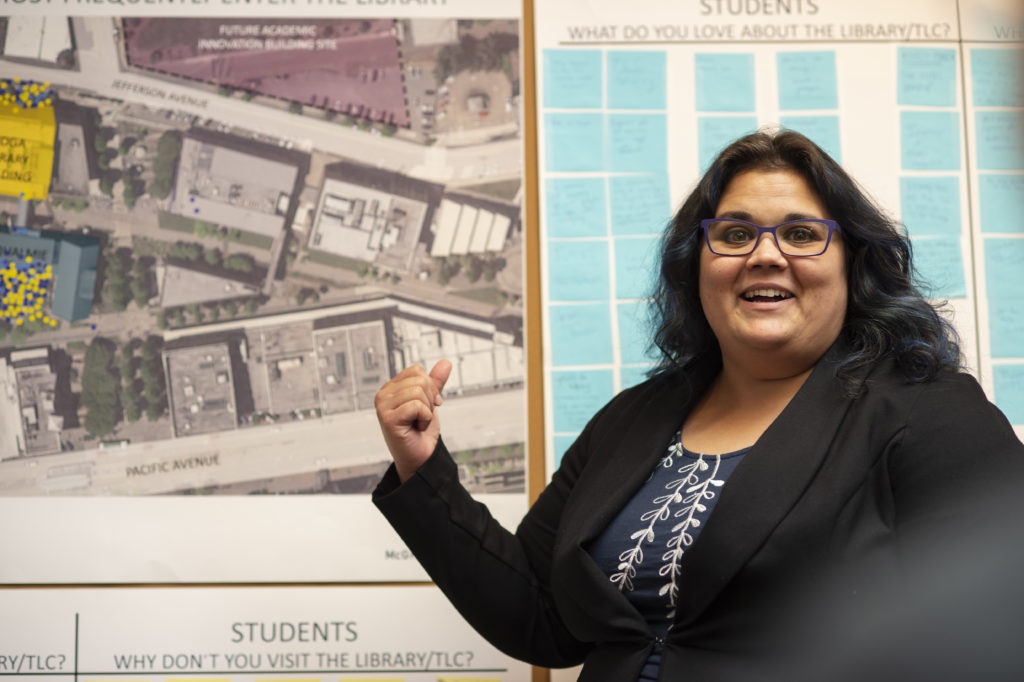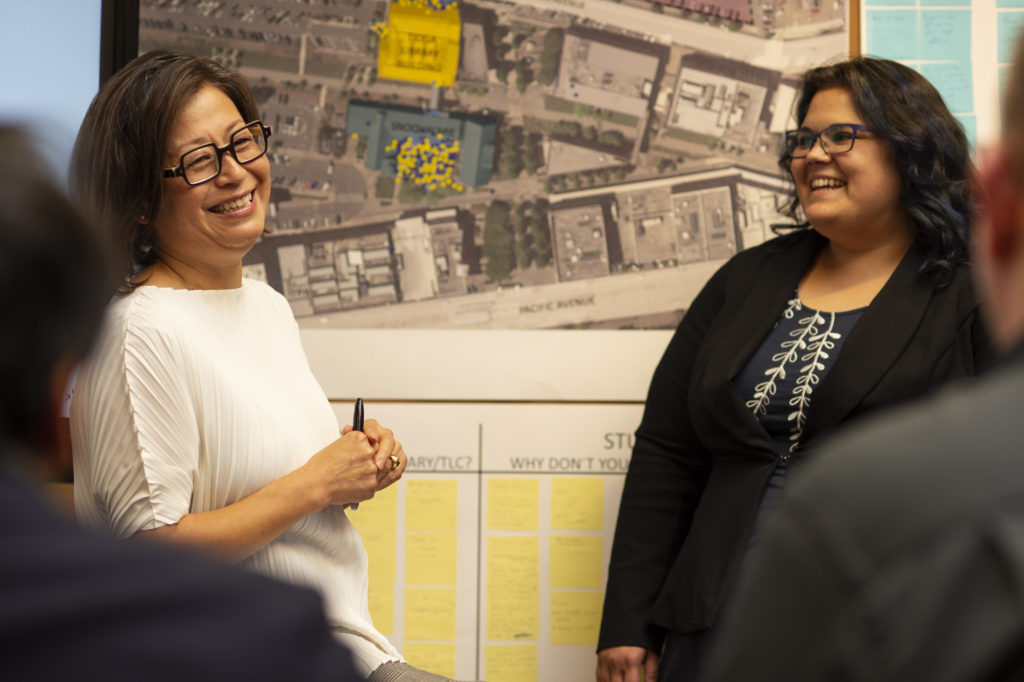Early on in her career, Project Designer Shona Bose challenged herself to build up her skills, get involved and make an impact in her community. Today, she is the Chair for Conversations Regarding Tacoma – group of design, architecture and urban planning professionals who have a passion for making Tacoma a better place for everyone who lives here. On top of that, Shona has made her mark as a talented architect at McGranahan Architects on notable projects such as the UWT Learning Commons and is also a strong advocate for Diversity and Inclusion. It is due to her passion for these projects that Shona was recently interviewed for South Sound Business Journal’s 40 Under 40.
Leading by example is something Shona is known for. Her passion for combining creativity and community help paved the road to success and allow others to learn from her as well. We decided to interview Shona to learn more about her recent work:
How does being recognized for the 40 Under 40 inspire you in your work moving forward?
Our brains are more ready to accept new information and grow directly after exercise. Students need time and space to move throughout the day to engage deeply in education. In addition to P.E. and recess, we learn that there are schools using design interventions in tangent with teacher training to create spaces for kids to be physically and mentally active and engaged.
What does making the 40 Under 40 list mean to you?
It feels very cool to be recognized and be interviewed by South Sound Business magazine. I feel so honored, but I also recognize that I can use this opportunity as a platform to start conversations about important issues.

What are you most proud of as you reflect on your career thus far?
I’m very proud of the Diversity and Inclusion work we do here at McGranahan Architects. We started out two years ago and since then have learned how to listen and communicate better with each other. This group taught me the importance of patience and how to help guide others on this journey. We’ve all worked together to get this far. I’m very thankful that our Partners and others on the committee didn’t give up, but everyone continued to stay engaged. I learned so much throughout the process.
What aspects of your work to date do you feel best reflect what this award means to you?
I think the work we’re doing at the UWT’s new Learning Commons as well as the Diversity & Inclusion work at our firm play big parts. McGranahan started a Diversity and Inclusion Committee a few years ago to address the inequities in our own workplace as well as in the field of architecture. I have deeply held beliefs for creating more equitable spaces, especially as my career has been in the educational architecture field. However, talking across the table and bringing these ideas to action was more challenging than I had known. The conversations we’ve had exploring these issues have led to deeper understandings and meaningful actions.
The UWT Learning Commons is a unique project that will serve all students at UWT. It has been an amazing journey to work with Director of Design Seong Shin and the students and staff at UWT. Together, we built coalitions and created a design that is not only embedded in academia and scholarship, but is also reflective of the diverse student population and cognizant UWT’s urban, historical campus.

What inspiration do you draw from the type of projects you work on?
Education and access to education has always been essential to me. My dad is a professor and my mother was a school teacher, so I grew up in a household that stressed the importance of education. Getting to work with school districts and build new places dedicated to learning is incredibly meaningful, and I love being a part of the incredible work we do at McGranahan. My absolute favorite part is seeing the students’ and teachers’ faces when they finally see their newly built school. There’s nothing like it.
Where do you want to go from here? What kind of projects/project roles do you want in the future?
Oh, this is always a tough question for me as there are so many possibilities. For my career, I want to continue developing leadership skills and working with amazing teams. For Conversations Regarding Tacoma, I want to build our audience and engage more people around what Tacoma looks like and how we develop going forward. At some point, I’d like to own my own business (most likely a gym of some sort connecting minds to bodies and showing people what they’re capable of).
But the big thing I’d like to get involved with next is the funding structures in public education, which seems like an incredibly tricky subject. But what I see in architecture are the budgets that different districts are able to have based on their locations. Districts build and renovate schools based on the levies and bonds they can pass taxing the land in their district. Districts with lower income and lower property values inherently have less money to work with than richer neighborhoods. This inequitable system perpetuates a cycle of haves and have nots whereas education should be a way to level the playing field. It is an important touchstone of our society to build equitable access to education.
How do you feel diversity and inclusion can support you and others to thrive in your careers?
I think that it’s so important, if not one of the most important factors. We cannot design the world for only one point of view – it doesn’t make sense to me to do it that way. I want to design with many different perspectives in mind. For example, the ADA regulations made spaces more equitable for many different people – those with disabilities, the elderly, new parents with strollers, etc. Building our cities so that they are accessible to everyone just makes sense, but it took the ADA to regulate ramps and door swings and restrooms for it to happen. Designing spaces with Diversity and Inclusion in mind to reflect the whole city is so important. The world is diverse, and we have to design for that.
